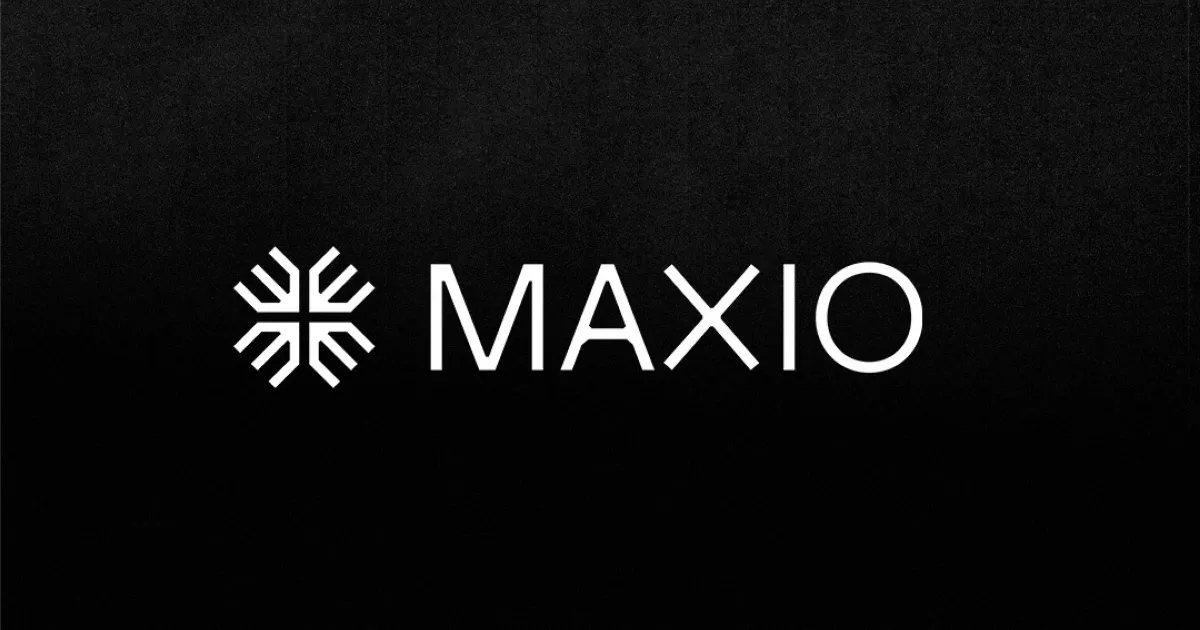Customer Acquisition is the process of acquiring new customers in a business. Not only is it one of the main drivers of revenue growth for early-stage companies, it’s a primary goal for SaaS businesses across market stages. More customers = more revenue, plain and simple.
For subscription-based SaaS businesses, your customer acquisition metrics indicate how effectively you acquire new users via sales, marketing, or a product-led approach like a free trial. Combining these different tactics makes up an effective customer acquisition strategy, which fuels the entire acquisition process.
Here’s how you can create an effective customer acquisition strategy to win more business in your own SaaS company.
What is a Customer Acquisition Strategy?
A customer acquisition strategy is a plan of action designed to acquire new customers for your business. Like any great plan, several operational questions need to be answered before you spring into action.
Here are a few key questions to inform your customer acquisition strategy:
Operations
- How are roles and responsibilities being assigned?
- How much of your total company budget will be dedicated to customer acquisition?
- What does success look like overall?
Tactics
- What tactics are you going to use to acquire new users?
- How are prospects going to move through the buyer’s journey?
- What role will marketing play in the acquisition process?
- At what point will you introduce Sales into the buyer’s journey?
- What does your go-to-market strategy look like?
Metrics
- What’s your target win rate for sales opportunities?
- What’s your estimated timeline for customer acquisition?
- What’s your estimated customer acquisition cost (CAC)?
As you can tell from the questions above, your customer acquisition strategy has a significant impact on your organization’s internal structure (and vice-versa). As a result, no two companies’ acquisition strategies will look the same—it all depends on the context of your business.
Not only is it important to consider the efficacy of your strategy, but the cost of acquiring a customer as well. Keeping your customer acquisition costs low ensures that you’ll have greater profit margins, which can then be re-invested into your business and employees.
Again, corresponding variables such as customer acquisition cost (CAC) and customer revenue all tie back to your acquisition strategy. Below, we’ll dive into how to develop a customer acquisition strategy from start to finish.
How to Develop a Customer Acquisition Strategy
1. Identify your target market
Funneling time, energy, and resources into developing a stellar customer acquisition strategy is only helpful if it’s designed with your target market in mind. Otherwise, you’ll be selling yourself to prospects who don’t need (or care about) your SaaS.
To find qualified prospects, you’ll need a thorough understanding of your target market. Before you set your acquisition plan in motion, ask yourself: who’s a good fit for my SaaS?
The answer lies in your product or service’s value proposition. For example, at Maxio, we help high-growth SaaS companies automate their subscription management, revenue & expense recognition, and SaaS metrics. While our solution is a great fit for SaaS businesses that have their sights set on rapid growth, a mammoth-sized enterprise company might require an enterprise tool—like an ERP—to maintain a consistent workflow and operational structure across all their departments.
Your target market is also a good indicator of which acquisition methods will work best. For example, if you’re a product-led company, you may consider a freemium business model to build a user base of free trial customers quickly. However, if you’re selling to the enterprise, you might run targeted ABM campaigns, participate in industry events, and take a more traditional sales-led approach to land accounts with a higher Total Contract Value (TCV).
2. Review closed/won deals in your CRM
Sometimes the best advice is staring us right in the face. In this instance, if you need help developing your customer acquisition strategy, one useful technique is reviewing closed/won deals and opportunities in your CRM.
- Which marketing channels did prospects engage with before becoming a customer?
- How are your prospects responding to sales outreach?
- What kinds of engagement are influencing closed/won opportunities most frequently?
Using your CRM data, find the acquisition methods with the greatest ROI and double down.
However, you may need more than a one-size-fits-all strategy if you’re selling to individual users, SMBs, and enterprise accounts. In this case, you can run a cohort analysis across these market segments to learn what acquisition methods perform best. Then, based on your available resources, you can hire separate teams and build campaigns to spearhead the acquisition of customers in these different market stages.
3. Don’t put all your eggs in one basket
Diversifying your approach to customer acquisition is the best way to ensure you’re targeting prospects from all the right angles.
For example, using a 100% product-led approach to customer acquisition is an effective way to acquire new users quickly. However, without a dedicated sales team, you could struggle to target and win large enterprise accounts with higher ACVs. Similarly, conducting an all-out sales blitz might win you the occasional customer, but you’ll most likely waste time on prospects who aren’t ready to buy your SaaS.
4. Review your pricing strategy
Unless you’ve built a one-in-a-million product, pricing and packaging will be a huge determining factor in whether or not customers buy your SaaS. Choosing the right subscription model for your SaaS business allows you to align your pricing strategy with how customers consume your products and optimize offers for revenue growth so billing gives you a competitive edge.
The end result? A competitive pricing model that attracts new business and generates consistent revenue for your company.
5. Use SaaS metrics to reiterate, test, and improve
It’s unlikely that you’ll nail your customer acquisition strategy on the first try—it will take regular tests, experiments, and improvements to find what works best. As customer expectations and markets change, so should your customer acquisition strategy.
Here are a few key metrics you can reference to test the efficacy of your acquisition strategy:
Customer Acquisition Cost (CAC)
The costs associated with acquiring a new customer have significant implications on operational decisions in your business.
CAC, and its sister metric, Customer Lifetime Value (CLV), help drive strategic business decisions about what to sell, who to sell it to, and how to deploy capital to acquire new customers. Every dollar you spend on customer acquisition—whether through sales and marketing costs or software tools—attributes to your total customer acquisition cost.
If you find that certain actions are causing CAC to rise, consider adjusting your acquisition strategy as necessary to reduce spending and double down on what works.
Customer Lifetime Value (CLV)
CLV is an estimate of the projected total value of a customer over its lifetime. If your acquired customers/accounts suffer from low CLV, it could be due to one of the following reasons:
- You’re not leveraging the total value of your SaaS through competitive pricing
- You have poor product/market fit
- You have a poor onboarding process
- Your product roadmap is misaligned with customer needs
- Your customer success, sales, and marketing teams aren’t nurturing accounts effectively
Or, it could be that your customer acquisition strategy is targeting the wrong prospects. You’re much more likely to increase your average CLV by identifying qualified prospects for your SaaS and building an acquisition pipeline designed with them in mind.
Churn
Churn is the percentage rate at which SaaS customers cancel their recurring revenue subscriptions.
If you’re acquiring new customers, only to have them churn a few months later (or less), this might result from a poor customer acquisition strategy. You’ll need to rethink your acquisition methods to target customers who are going to sign up for your SaaS and stick around.
Tracking these three metrics—CAC, CLV, and churn rate—provides insight into key aspects of your business, including the success of your sales and marketing tactics, pricing strategy, customer success efforts, and customer acquisition strategy.
Customer Acquisition Tactics
There are several tactics, strategies, and methods that you can use to acquire new customers. Here are a few different acquisition methods you can add to your toolkit.
Cold Outreach
Cold Outreach is when you contact and pitch your product/service to prospects with whom you have no prior relationship.
When performing cold outreach, keep your communications short and concise. Quickly present your offer, provide an incentive for starting a conversation, or ask a question about your prospect’s pain points. For early-stage SaaS companies, performing cold outreach presents the opportunity to quickly acquire your first handful of users without breaking the bank.
Specifically, cold emails are extremely effective and scalable, with numerous automation tools available at a low cost. They can also be tracked for performance, allowing you to optimize future outreach.
That being said, while it may help you achieve a quick win, contacting prospects recklessly via email could negatively impact your email sender reputation score. If your score becomes too low, your domain or IP could become blacklisted, meaning your emails won’t reach your prospects’ inboxes in the future.
Content
Content marketing involves creating, publishing, and distributing content through various channels, including blogs, videos, webinars, case studies, original research, virtual events, etc. This content is used to engage prospects throughout the buyer’s journey and generate demand for your SaaS.
How can you incorporate content marketing into your SaaS customer acquisition strategy?
Bubble, a no-code software development platform, uses a mix of free-trial offers and content marketing to drive most of their customer signups. For example, they provide prospects and free trial users with loads of resources, including:
- A community page to showcase user projects built with Bubble
- A public marketplace for templates, plugins, and software development agencies
- An online academy to teach the fundamentals of app development in Bubble
Content marketing doesn’t have to be limited to the occasional company LinkedIn post or one-off e-book. Done well, SaaS companies that use content marketing see 30% higher growth rates and 5-10% better retention rates.
SEO
Search Engine Optimization (SEO) is used to organically increase your website’s visibility and help qualified prospects discover your SaaS. The standard SEO strategy uses a combination of keyword research, content strategy, link building, and website optimization to help search engine spiders crawl and index your site more effectively.
It’s worth noting that SaaS SEO is a long-term play that requires a significant time investment. According to SEO experts, SEO takes six months to show an increase in traffic on average, while the full results of good SEO strategies are visible after 12–24 months. Despite this, over time, the compounding effect of SEO can drive qualified prospects to your website for months (or years) on end at no additional cost.
Paid Ads
Unlike SEO, paid ads are a short-term play that allows you to launch campaigns and start targeting prospects immediately.
With paid ads, you can:
- Target qualified prospects across various channels
- Customize messaging for separate audiences
- Nurture leads within your funnel
- Track exactly how each lead found you
The versatility and efficacy of pay-per-click (PPC) advertising make it a staple in many SaaS companies’ customer acquisition toolkits.
Social Media
Social media marketing is your gateway to around 3.6 billion eyeballs.
On a smaller scale, B2B SaaS companies can use social media to build brand awareness and engage with prospects in their industry—and your social media presence doesn’t have to be limited to just LinkedIn, Facebook, and Twitter.
You can also leverage community groups, podcasts, and industry forums to connect with prospects outside the typical sales and marketing funnel. This type of engagement is often referred to as “dark social,” or web traffic that comes from popular modern distribution channels where it’s challenging to track attribution accurately.
While attribution software can’t always track dark social interactions, it’s often where buyers research SaaS solutions and make the majority of buying decisions.
As you develop your customer acquisition strategy, be sure to invest time into creating an active online presence.
Events
In an industry where most buying decisions are made online, it might come as a surprise that B2B marketers rank in-person events as their #1 tactic for demand generation. As you develop your customer acquisition strategy, consider how events, virtual or in-person, will be used to raise your brand awareness and attract qualified buyers.
Free Trials
A freemium business model drives customer acquisition by making your product/service easily available to new users. Using your product to drive customer acquisition, you can speed up time-to-value, increase product/brand awareness, and shift your sales and marketing efforts towards user retention and deal expansion with existing customers.
Atlassian is a great example of a SaaS company whose customer acquisition strategy was fueled by free trial offers. From its bootstrapped founding in 2002 all the way to a $5 billion valuation in 2016, Atlassian famously had no salespeople.
Getting Started With Your New Strategy
In review, the foundation of any successful customer acquisition strategy involves these key steps:
- Make a plan
- Choose effective tactics
- Track the right metrics
- Adjust your pricing and packaging



